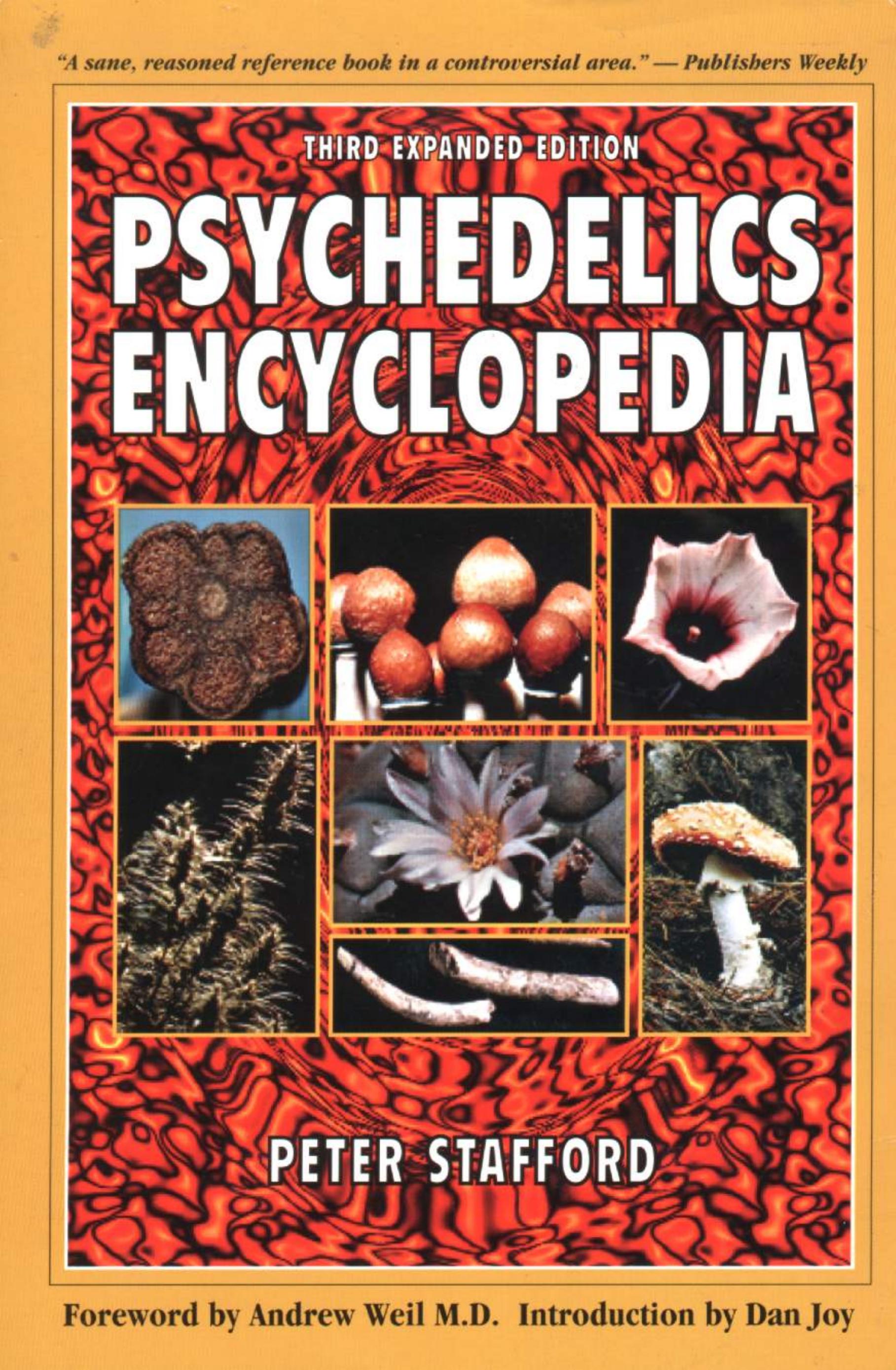Psychedelics Encyclopedia by Peter Stafford

Author:Peter Stafford [Stafford, Peter]
Language: eng
Format: epub, pdf
ISBN: 9781579511692
Publisher: Ronin Publishing
Plants of the Gods
Cannabis sativa, the most common and tallest species, was once grown mainly for fiber but now is the black market staple.
Cannabis indica is believed to be the most potent species. Cultivated for its inebriating qualities, it is short, bushy and very resinous.
Cannabis ruderalis is a rare Siberian species—short, without much mental effect, little known in the West, maturing within only two months.
The Tibetans considered Cannabis sacred. A Mahayana Buddhist tradition maintains that during the six steps of asceticism leading to enlightenment, Buddha lived on one Hemp seed a day . . . . In Tantric Buddhism of the Himalayas of Tibet, Cannabis plays a very significant role in the meditative ritual used to facilitate deep meditation and heightened awareness. Both medicinal and recreational secular use of Hemp [are] likewise so common now in this region that the plant is taken for granted as an everyday necessity.
Cannabis indica Lamarck, classified by Lamarck in 1783, is a shorter plant that’s more densely branched. Seldom over eight feet tall, it has short, brittle fibers and thus is not very useful for fiber but generally contains the greatest amount by weight of Cannabis resin. Until recently, it’s cultivation has been mainly restricted to India, Persia and the Arab countries, where its leaves are often made into a milkshake and its resin is pressed into hashish.
The third species of the marijuana plant, Cannabis ruderalis Janischewsky, was identified in 1924 in southern Siberia, but it also grows wild in other parts of Russia. Rarely over two feet tall, this species has little psychoactivity in its resin but matures much faster than the others (in about seven weeks).
The earliest record we have of Cannabis ruderalis comes from the tireless Greek traveler Herodotus, often considered the first Western historian. In 450 B.C., he described the funeral rites that took place when a king died among the Scythians, a nomadic tribe that roamed the steppes from Turkestan to Siberia. To purify themselves the Scythians set up small tepee-like structures covered by rugs, which they would enter to inhale the fumes of hemp seeds thrown onto red-hot stones. “It smolders and sends forth such billows of smoke that no Greek steambath could surpass it,” comments Herodotus. “The Scythians howl with pleasure at these baths.”
Historians considered this passage by Herodotus to be romantic embellishment until the late 1940s, when in the Altai mountains of Siberia Scythian tombs were found that had been covered with ice since about 400 B.C. Alongside these tombs were well-preserved corpses and little tents containing copper cauldrons filled with stones, ice and hemp seeds. Differences in Cannabis seeds enabled Janischewsky to distinguish C. ruderalis from the sativa and indica species, and when Soviet botanists examined the frozen seeds they were declared to be of the ruderalis species. C. ruderalis remains largely unfamiliar to botanists outside the U.S.S.R.
Download
This site does not store any files on its server. We only index and link to content provided by other sites. Please contact the content providers to delete copyright contents if any and email us, we'll remove relevant links or contents immediately.
| Anthropology | Archaeology |
| Philosophy | Politics & Government |
| Social Sciences | Sociology |
| Women's Studies |
Cecilia; Or, Memoirs of an Heiress — Volume 1 by Fanny Burney(32064)
Cecilia; Or, Memoirs of an Heiress — Volume 3 by Fanny Burney(31459)
Cecilia; Or, Memoirs of an Heiress — Volume 2 by Fanny Burney(31409)
The Great Music City by Andrea Baker(30784)
We're Going to Need More Wine by Gabrielle Union(18636)
All the Missing Girls by Megan Miranda(14749)
Pimp by Iceberg Slim(13782)
Bombshells: Glamour Girls of a Lifetime by Sullivan Steve(13689)
Fifty Shades Freed by E L James(12918)
Talking to Strangers by Malcolm Gladwell(12882)
Norse Mythology by Gaiman Neil(12836)
For the Love of Europe by Rick Steves(11533)
Crazy Rich Asians by Kevin Kwan(8892)
Mindhunter: Inside the FBI's Elite Serial Crime Unit by John E. Douglas & Mark Olshaker(8707)
The Lost Art of Listening by Michael P. Nichols(7165)
Enlightenment Now: The Case for Reason, Science, Humanism, and Progress by Steven Pinker(6877)
The Four Agreements by Don Miguel Ruiz(6322)
Bad Blood by John Carreyrou(6281)
Weapons of Math Destruction by Cathy O'Neil(5837)
